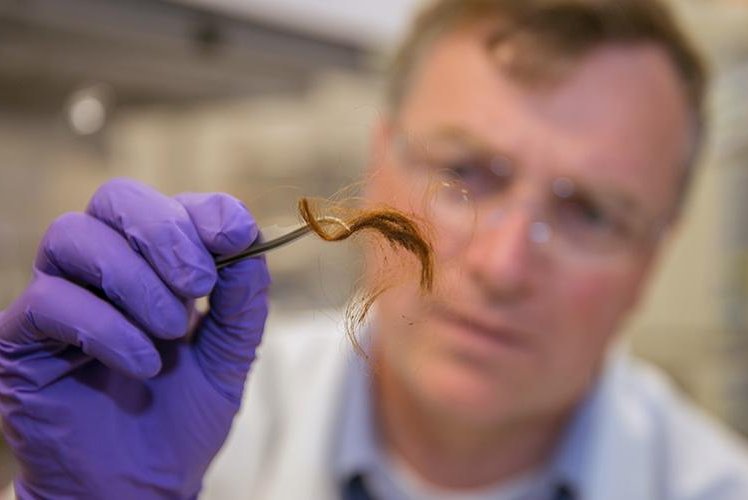Glendon Parker, a biochemist at Lawrence Livermore National Laboratory’s Forensic Science Center, studies a 250-year-old hair sample. Photo by Julie Russell/LLNL
LIVERMORE, Calif., Sept. 7 (UPI) -- New research suggests proteins found in human hair are unique to each individual. The proteins could be used by forensic scientists and archaeologists to identify human remains.
DNA profiling is the preferred strategy of forensic scientists and archaeologists, but DNA material can be degraded by the environment over time. Proteins are more stable, and could offer a more reliable way to identify human remains.
Scientists successfully identified proteins in bioarcheological hair samples from six individuals, including 250-year-old specimens. Their analysis proves hair proteins remain stable and identifiable over time.
Researchers have so far been able to locate 185 different hair protein markers in hair samples collected from 76 living humans of European-American and African descent -- enough to yield patterns unique to an individual.
Analysis shows there are direct correlations between a person's hair protein patterns and DNA, further legitimizing the technique's usefulness to forensic science.
Scientists are now working on narrowing down the catalogue of protein markers to a core group of 100, providing a diversity rich enough to differentiate the protein patterns in a single hair from the entirety of the world's population.
If successful, the new identification technique could be used by archaeologists to identify excavated bodies or by police, investigators and forensic scientists to analyze crime scenes.
Researchers detailed the science behind the new hair analysis technique in the journal PLOS ONE.
"We are in a very similar place with protein-based identification to where DNA profiling was during the early days of its development," Brad Hart, lead author of the new paper and forensic scientist at the Lawrence Livermore National Laboratory, said in a news release. "This method will be a game-changer for forensics, and while we've made a lot of progress toward proving it, there are steps to go before this new technique will be able to reach its full potential."















